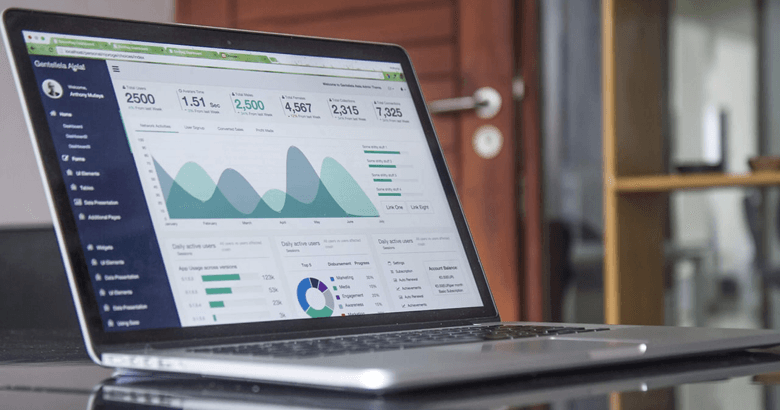Contents
- 1. Manual reporting wastes time
- 2. Everyone can change everything
- 3. Large, confusing and difficult to manage
- 4. Overall reporting is impossible
- 5. Information can get lost in the clutter
- 6. Lack of structure
- 7. Bad decisions are made on the fly
- 8. Data can be difficult to analyze
- 9. Talent is going to waste
- 10. Opportunities are being missed
- Make static excel spreadsheets a thing of the past
If you’re still using spreadsheets to track performance on your strategic plan, you’re not alone. With over 750 million users worldwide, spreadsheets have been the go-to business reporting and analysis software since 1985. While static spreadsheets still have their uses, they fall short on providing a complete reporting and business intelligence solution.
Using static solutions such as Excel is likely costing your business unnecessary time, effort and money. The resources dedicated to updating and maintaining these spreadsheets could be better spent working towards achieving your strategic goals.
Here are 10 ways that using static spreadsheets may be hindering your strategic planning:
1. Manual reporting wastes time
Creating a spreadsheet might not seem like a particularly onerous task from the outset, however, when you actually break it down, you realize there is more to this process than you thought. You have to gather data and verify its accuracy, create appropriate formulas without error, and manually convert your data into charts and graphs to build out your reports. You also need to factor in all the time spent maintaining the formulas that others have inadvertently changed. All of these seemingly small steps start to add up and end up being a significant drain on your time.
2. Everyone can change everything
Excel’s permission setting is great if you are trying to limit the entire file to read-only vs write. But if data integrity is of importance then Excel is not the solution for you. Once a strategic plan is developed and put into action, you are relying on every user to update their progress on the deliverables they are responsible for. If someone is not paying attention and overwrites or deletes another person’s update, or provides an incorrect progress update to the wrong deliverable, then the integrity of your data is being compromised, which can result in incorrect business decisions being made.
3. Large, confusing and difficult to manage
Running an entire department or organization’s operation on a spreadsheet is no small undertaking. I have seen 100+ pages of spreadsheets printed out in binders that contains deliverables from multiple departments and reporting on the progress to take weeks and months. By the time the information is updated it’s stale! Spreadsheets can get very large when used for strategic or operational plan tracking which makes it difficult to manage and report on. Depending on your computer’s resources and version of Excel used, there are limitations when working with large spreadsheets.
4. Overall reporting is impossible
Have you ever tried to create an overall report from all the progress updates in Excel and thought to yourself there must be a better way? A spreadsheet is great for the initial creation of a strategic plan, and if you’re using google sheets, it makes it easy to collaborate. However, when it comes to tracking the progress of your plan and reporting an overall progress to stakeholders, unless you love to spend your days collating and summarizing the information line by line, spreadsheets will be your most hated friend.
5. Information can get lost in the clutter
We’ve all seen those Excel spreadsheets that have been around for years, constantly being updated with new data — all the while becoming more cluttered and more difficult to decipher. This is the result of manually building out your progress updates. Keeping everything in one place makes the most sense to gain the best understanding of your progress, but that much information in one place can go from being clear and concise to utter chaos in no time. These complex spreadsheets may make sense to some, but for others, much of the data becomes meaningless.
6. Lack of structure
The lack of structure that makes spreadsheets appealing also makes it challenging when implementing strategic plan across an entire organization. When every department has their own version of spreadsheet with their own structure and unique nomenclature, it makes it very difficult to collaborate between departments on shared deliverables, resulting in confusion and misunderstanding. The lack of a common strategic planning structure across the organization also makes it challenging to communicate and report on progress.
7. Bad decisions are made on the fly
Unfortunately, there are times when postponing decisions just isn’t an option. As they say, the show must go on! This can lead to best guesses based on unverified data or quickly-created spreadsheets that may have bad data and formulaic errors. In a world where one bad decision can affect revenue for years to come, you don’t want to find yourself improvising.
8. Data can be difficult to analyze
An additional problem associated with a high volume of data presented by an excel document is the potential for misinterpretation and error when it comes time to analyze and put information into context. When tracking progress on your strategic plan, it is vital that you have an up-to-date and accurate understanding of what your organization has achieved. Misread or misinterpreted data provides an inaccurate picture of your overall strategic plan progress, hindering your ability to achieve goals and provide accurate reports to stakeholders.
9. Talent is going to waste
By the very nature of how spreadsheets are developed and shared, they are usually worked on by team members from all levels of an organization, particularly when they are tracking progress on your strategic plan. While it’s great that your top-level executives are well-versed in Excel, they shouldn’t be stuck fine-tuning spreadsheets. When you have a business to run, the last thing you want to worry about is your CEO manually adjusting formulas on a spreadsheet or data points on a chart.
10. Opportunities are being missed
While your team members are manually formatting spreadsheets and reports that could easily be created automatically, opportunities are falling by the wayside. It’s time to ditch those spreadsheets and let an automated tracking and reporting software take the reins, and allow your team more time to understand the data to effect positive change within your organization.
Make static excel spreadsheets a thing of the past
Spreadsheets are a business management and reporting tool that are simply unable to keep up with the high demands of a busy organization. Static tools lack the ability for businesses to automate their tracking and reporting, forcing your team to engage in tedious data entry on a regular basis. Selecting the appropriate solution for your organization is sure to mitigate your team’s wasted effort, time and resources, and streamline your efforts towards achieving your overall strategic plan.




